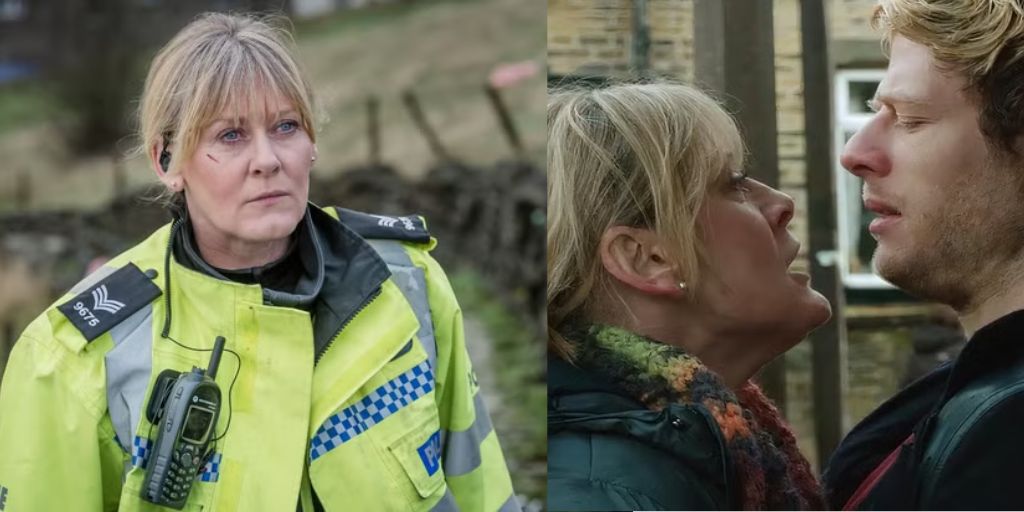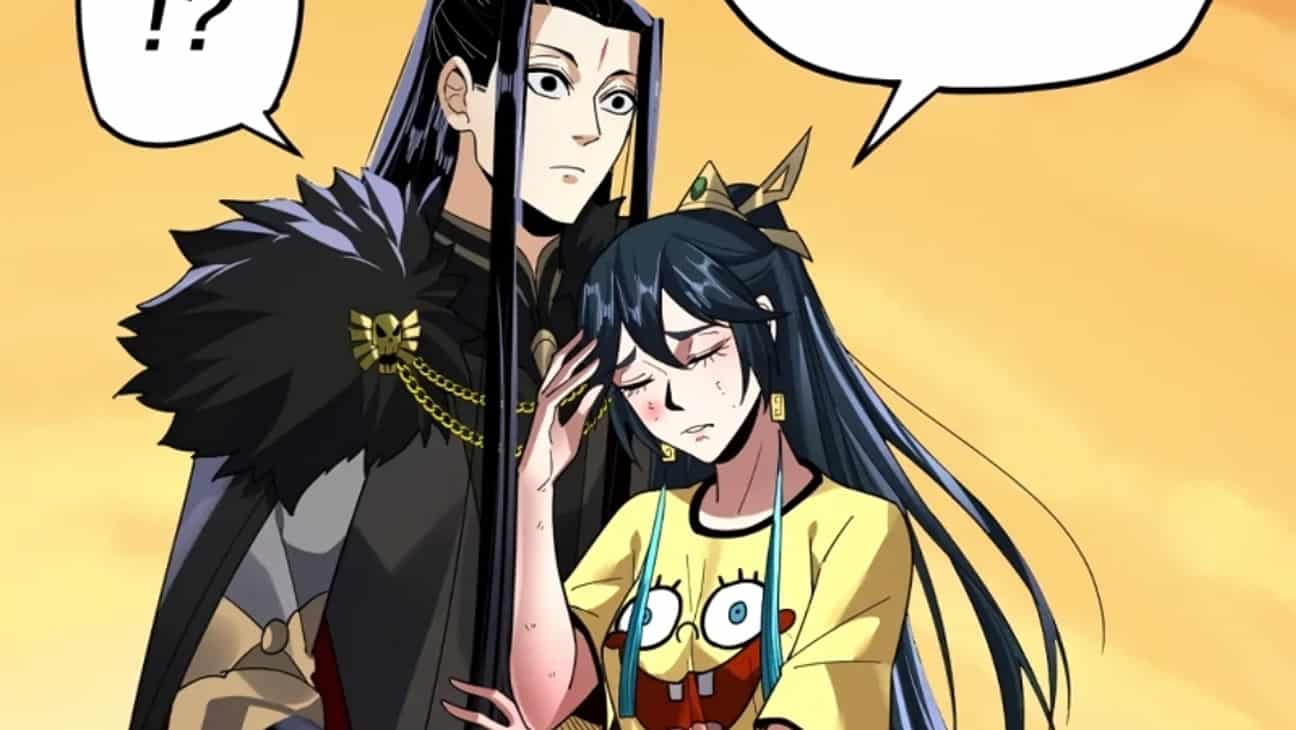When HBO revealed in early 2019 that Kate Winslet, one of the most respected film actresses of our time, would star in Mare of Easttown, many fans were thrilled. Winslet, known for her powerful performances in films like Titanic and The Reader, was stepping into the world of television as a small-town detective.
Her role as Mare Sheehan in the crime drama was highly anticipated. The show, set in a working-class Pennsylvania town, tackled difficult themes like addiction, grief, and family trauma.
While Winslet’s performance in Mare of Easttown earned her accolades, there was another show that paved the way for this gritty detective story five years earlier.
Happy Valley, a BBC crime drama created by Sally Wainwright, aired its first season in 2014. The show starred Sarah Lancashire as Sergeant Catherine Cawood, a tough, witty, and complex police officer in a small town in West Yorkshire, England.
Happy Valley became a huge hit, and many people saw parallels between the two shows. Both focused on strong female leads dealing with personal loss, complex family dynamics, and the gritty reality of crime in their communities.
While Mare of Easttown received praise for its authentic portrayal of small-town life, Happy Valley set the standard for this kind of drama years earlier. Lancashire’s performance as Catherine Cawood became iconic, and the show’s influence can still be felt in modern television crime dramas.
What Is ‘Happy Valley’ About?
Happy Valley is a three-season crime drama that aired on the BBC. It was created by Sally Wainwright, who is known for writing compelling stories about complex women and families. The show takes place in the small, gritty town of West Yorkshire, where Sergeant Catherine Cawood is a police officer.
Catherine is a middle-aged woman, divorced, and living with her sister, Clare, who is recovering from addiction. She is also raising her grandson, Ryan after her daughter tragically died by suicide.
The story revolves around Catherine’s struggle with the pain of losing her daughter and her determination to seek justice for her. She believes that a man named Tommy Lee Royce, played chillingly by James Norton, is responsible for her daughter’s death.
Royce had raped Catherine’s daughter, which led to the birth of Ryan. Catherine blames Royce for what happened and is determined to make sure he pays for his crimes. This quest for justice is one of the central themes of Happy Valley, and it drives much of the drama and tension throughout the show.
Each season of Happy Valley begins with Catherine going about her job as a police officer, handling the daily challenges of crime in West Yorkshire. The show opens with her introducing herself in a very blunt way: “I’m Catherine, by the way. I’m 47, I’m divorced.
I live with my sister, who’s a recovering heroin addict. I have two grown-up children, one dead, one I don’t speak to, and a grandson.” This introduction sets the tone for the show. Catherine is tough, no-nonsense, and has seen her fair share of heartache.
In Season 1, Catherine becomes obsessed with Tommy Lee Royce. She is convinced he is responsible for her daughter’s death and is determined to bring him to justice.
Royce, who is a violent criminal, is involved in a kidnapping plot, and Catherine gets caught up in trying to solve the case while also dealing with her personal vendetta against him. The tension between Catherine and Royce becomes the central focus of the show, and their interactions are some of the most intense and emotionally charged moments in the series.
In Season 2, Royce is in prison, but he finds a way to continue causing trouble for Catherine and her family. He begins writing letters to Ryan, Catherine’s grandson, trying to build a relationship with him from behind bars.
This creates even more tension for Catherine, who is trying to protect her family from Royce’s influence. At the same time, Catherine is dealing with other crimes in the community, including a series of brutal murders.
By Season 3, Catherine is nearing retirement, but her troubles with Royce are far from over. She discovers that Ryan has been secretly visiting Royce in prison, which turns her world upside down.
The cat-and-mouse game between Catherine and Royce reaches its peak in the final season, culminating in a shocking and highly anticipated showdown between the two characters.
The chemistry between Sarah Lancashire and James Norton is one of the highlights of the show. Their characters, Catherine and Royce, are locked in a battle of wills, and their interactions are filled with tension and emotion.
While Royce is easy to hate in the first two seasons, Season 3 reveals a more complex side to his character, adding depth to the story. Despite this, the audience is still rooting for Catherine, who is a flawed but ultimately sympathetic character.
The Impact of ‘Happy Valley’ on Modern Crime Dramas
Happy Valley was praised for its realistic portrayal of small-town life in West Yorkshire. The show didn’t shy away from the harsh realities of poverty, drug addiction, and violence in the community.
The setting of West Yorkshire, with its rolling green hills and picturesque views, contrasts sharply with the dark and gritty world of crime that Catherine deals with every day. This juxtaposition adds to the tension of the show, as viewers are reminded that even in seemingly peaceful places, there can be darkness lurking beneath the surface.
One of the things that sets Happy Valley apart from other crime dramas is its focus on the emotional and psychological toll that police work takes on its characters. Catherine is not just a police officer; she is a woman who has experienced profound loss and trauma.
Her personal life is deeply intertwined with her work, and the show shows how this affects her relationships with her family and colleagues. This focus on character development is one of the reasons why Happy Valley resonated with so many viewers.
The show also addressed the issue of addiction in a very real and human way. Catherine’s sister, Clare, is a recovering heroin addict, and her struggle with addiction is a major subplot throughout the series. Clare’s addiction not only affects her but also has a ripple effect on the rest of the family.
Catherine, who is fiercely protective of her sister, tries to support her while also dealing with her own grief and anger. The show portrays addiction as a complex issue that affects everyone involved, and it doesn’t offer easy solutions or tidy resolutions.
Another theme that Happy Valley tackles is the impact of crime on the community as a whole. In one particularly poignant scene in the Season 1 finale, Catherine reflects on how many young people in West Yorkshire have been lost to drugs and violence.
She talks about how part of her job as a police officer is dealing with the fallout of young people being exploited by drug dealers. This scene highlights the broader social issues that the show addresses, and it adds another layer of depth to Catherine’s character.
Comparisons Between ‘Mare of Easttown’ and ‘Happy Valley’
When Mare of Easttown premiered on HBO, many viewers immediately drew comparisons between it and Happy Valley. Both shows feature strong female leads who are dealing with personal loss and family trauma while working as detectives in small, working-class towns. Both shows also tackle difficult themes like addiction, grief, and the toll that police work takes on its characters.
One of the most striking similarities between the two shows is the way they portray their settings. Mare of Easttown is set in a small town in Pennsylvania, and the show goes to great lengths to create an authentic portrayal of life in this community.
The characters speak with distinctive Pennsylvania accents, and the show doesn’t shy away from showing the economic struggles and social issues that affect the town. Addiction is a major theme in Mare of Easttown, just as it is in Happy Valley, and the show portrays the devastating impact that drugs can have on a community.
In Happy Valley, the setting of West Yorkshire is just as important to the story. The town, with its winding roads and rolling hills, is visually stunning, but it also has a darker side.
The show’s title, Happy Valley, is a bit of an ironic nod to the nickname given to the area by local police officers because of the high level of drug activity. Like Mare of Easttown, Happy Valley portrays the economic struggles and social issues that plague the community, and it doesn’t shy away from showing the harsh realities of life in a small town.
Despite these similarities, there are also key differences between the two shows. One of the biggest differences is the way that police work is portrayed. In American crime dramas, including Mare of Easttown, it is common for police officers to carry guns and use them when confronting suspects.
This can add a layer of action and tension to the story. However, in Happy Valley, the police officers do not carry guns. This creates a different kind of tension, as the characters have to rely on their wits and physical strength rather than firearms.
One of the most intense scenes in Happy Valley comes at the end of Season 2, when Catherine is involved in a foot chase with a corrupt police officer. The absence of guns in this scene makes it even more dramatic, as Catherine has to use her skills to apprehend the suspect without the threat of lethal force.
Another key difference between the shows is the portrayal of their lead characters. While both Mare Sheehan and Catherine Cawood are strong, complex women, they approach their jobs and personal lives in different ways. Mare is a more reserved and emotionally guarded character, while Catherine is more open and expressive. Catherine’s sarcastic sense of humor is one
of her most defining traits, and it often serves as a coping mechanism for the pain and trauma she carries. Mare, on the other hand, internalizes much of her grief and frustration, which makes her a more brooding figure. These differences in character make each show unique in its own right, despite the similarities in themes and setting.
Sarah Lancashire’s Unforgettable Performance as Catherine Cawood
While Happy Valley is an ensemble show with many standout performances, Sarah Lancashire’s portrayal of Sergeant Catherine Cawood is the heart and soul of the series. Lancashire brings depth, complexity, and humanity to the character in a way that is truly remarkable.
Catherine is a deeply flawed character, but her flaws make her all the more relatable and compelling. She is tough, sarcastic, and often brutally honest, but she is also loving, nurturing, and fiercely protective of her family. Her ability to balance these conflicting sides of her personality is what makes her such an unforgettable character.

Lancashire’s performance is filled with moments of vulnerability and strength. Catherine is a woman who has been through immense trauma, and that pain is always simmering just beneath the surface.
Whether she’s engaging in a tense standoff with a suspect or having a quiet moment with her grandson, there is always a sense that Catherine is carrying the weight of her past with her. This emotional complexity is what makes her character so engaging to watch.
One of the most powerful aspects of Lancashire’s performance is the way she handles Catherine’s grief. Throughout the series, Catherine is haunted by the death of her daughter, and her need for justice becomes an all-consuming obsession.
However, Lancashire never allows Catherine to become a one-dimensional character driven solely by revenge. Instead, she shows the many layers of Catherine’s personality—the anger, the sadness, the guilt, and the love she still has for her family. It is this multi-faceted portrayal that earned Lancashire critical acclaim and two BAFTA awards for Best Actress.
What makes Lancashire’s portrayal even more impressive is the physicality of the role. Catherine is not only a detective; she is also a hands-on police officer who gets involved in dangerous situations.
Whether it’s chasing down a suspect in a foot pursuit or engaging in a physical altercation, Lancashire brings a real sense of physicality to the role. She fully embodies the character, making Catherine feel like a real person who exists beyond the screen.
The Influence of ‘Happy Valley’ on Modern Television
Happy Valley set a new standard for crime dramas, particularly those centered around strong female protagonists.
Sally Wainwright’s writing, combined with Sarah Lancashire’s performance, created a show that resonated with audiences and critics alike. Its influence can be seen in many subsequent shows that feature complex female leads dealing with both personal and professional challenges.
One of the reasons Happy Valley was so groundbreaking is that it presented a female protagonist who was allowed to be both tough and vulnerable. Catherine Cawood is a character who doesn’t fit neatly into the mold of what a traditional female lead is supposed to be.
She’s not glamorous or emotionally fragile; she’s strong, resilient, and unapologetically herself. This departure from the typical portrayal of women in crime dramas helped pave the way for other shows to feature similarly complex female characters.
Shows like Broadchurch, Marcella, and Line of Duty have all taken inspiration from Happy Valley’s portrayal of a strong female detective dealing with personal trauma. Even Mare of Easttown, with its depiction of a tough, no-nonsense detective struggling with grief and addiction in her family, owes a debt to Happy Valley. While these shows have unique qualities, Happy Valley’s influence is clear in how they present their female leads.
The Emotional Core of ‘Happy Valley’: Family, Grief, and Redemption
At its heart, Happy Valley is not just a crime drama. It’s a story about family, grief, and the long road to redemption. The show’s central focus is Catherine’s quest for justice for her daughter, but it’s also about her journey to find peace and healing after an unimaginable loss.
Throughout the series, Catherine’s relationships with her family—especially her sister Clare and her grandson Ryan—form the emotional core of the show.
Clare, played by Siobhan Finneran, is another standout character. Her struggle with addiction and her attempts to rebuild her life are portrayed with sensitivity and realism. Clare and Catherine’s relationship is one of the most important in the show.
The two sisters love each other deeply, but their relationship is often strained by Catherine’s anger and grief, as well as Clare’s ongoing battle with her addiction. The dynamic between the two sisters adds depth to the show, and their moments of reconciliation are some of the most moving in the series.
Ryan, Catherine’s grandson, is also a crucial part of the story. Catherine is raising him after her daughter’s death, and her relationship with him is complicated by the fact that he is the product of a rape. Throughout the series, Catherine struggles with how to love and care for Ryan while also dealing with the pain of how he came into her life.
Ryan’s relationship with his father, Tommy Lee Royce, adds another layer of complexity to the story. Catherine’s fear that Ryan might inherit some of Tommy’s violent tendencies is a source of tension throughout the series.
The show’s scheme of grief is one of its most powerful elements. Catherine’s grief is always present, but it manifests in different ways—sometimes as anger, sometimes as sadness, and sometimes as determination to seek justice.

The show doesn’t offer easy answers or a tidy resolution to Catherine’s grief, but it shows her journey toward healing. By the end of the series, while Catherine may not have fully found peace, she has at least found a way to keep moving forward.
The Legacy of ‘Happy Valley’
Although Happy Valley ended with its third season, its impact on television is undeniable. The show’s portrayal of a strong, complex female detective set a new standard for crime dramas, and its focus on character development and emotional depth helped it stand out in a crowded genre.
Sarah Lancashire’s performance as Catherine Cawood is considered one of the best in television history, and the show’s influence can be seen in many of the crime dramas that followed.
For fans of Mare of Easttown who haven’t yet watched Happy Valley, the show is a must-see. While Mare of Easttown brought Kate Winslet to the small screen in a powerful performance, it’s important to recognize the shows that came before and laid the groundwork for modern detective dramas.
Happy Valley remains a landmark series, and its portrayal of Catherine Cawood as a tough, flawed, and deeply human character will continue to resonate with audiences for years to come.
Sally Wainwright’s writing, combined with Sarah Lancashire’s tour-de-force performance, has cemented Happy Valley as one of the greatest crime dramas of all time.
The show’s scheme of complex themes like grief, addiction, and redemption, along with its realistic portrayal of police work in a small town, make it a standout in the genre. For anyone who appreciates well-crafted, character-driven storytelling, Happy Valley is an essential watch.




